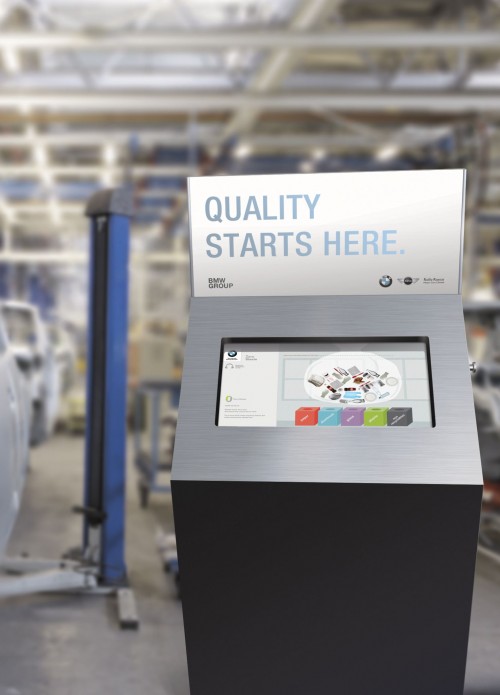
BMW uses kiosks to train thousands of employees around the world. Wireless connectivity helps HR staff update the content.
Best practices for wireless
Compared to pre-existing hostile networks and dedicated local connectivity, there are a number of ‘best practices’ that are distinctive to running digital signage on cellular wireless networks.
As mentioned, these networks entail higher expenses for data use. Although prices are coming down for both 3G and 4G service, digital signage content needs to be optimized to reduce its bandwidth consumption. Turning off automatic updates will also help prevent issues. Overall, it is a good idea to work with the telecommunications carrier to ensure pre-provisioning, rather than have to deal with problems later.
The other aforementioned disadvantage of cellular service is inconsistency in coverage quality. High-gain antennas are strongly recommended to help magnify signal strength.
Real-world examples
Leap Frog, which manufactures educational electronic devices for children, ran a 3G-based pilot program about eight years ago with an initial rollout of 20 shelf-mounted 432-mm (17-in.) touch screens in Toys R Us and Walmart stores in Canada and the U.S. The success of these units helped prove the business case for a larger rollout of 500 units.
During the pilot, a ‘wireless-only’ model was used. The units were subsequently updated with Universal Serial Bus (USB) keys, which the merchandising team used for periodic updates throughout the life of the program.

Behr Paint used to run its kiosk units in Home Depot stores on landlines, but switching to cellular wireless connectivity in 2011.
Behr Paint used to run 3,600 branded kiosk units in Home Depot stores on landlines, for a total of 100 individual phone-company contracts. This caused administrative hassles and, for various reasons, approximately three per cent of the screens were not connecting properly. Switching to cellular wireless connectivity in 2011 helped to eliminate both of these problems.
Automaker BMW, meanwhile, has turned to wireless connectivity to support a fleet of 36 kiosks in six locations around the world. The company’s manufacturing quality team uses these kiosks to train some 5,000 employees, with a new training module deployed every six to eight weeks. The locations’ IT systems are ‘locked down’ and require special permissions from BMW’s headquarters (HQ) in Germany, so the kiosks needed to be wireless to enable easy access for human resources (HR) staff.
BMW also used high-gain antennas for a portable kiosk program from 2004 to 2006. This involved a fleet of 200 surfboard-shaped units that were moved around regularly between shopping malls, health clubs, office building lobbies and other public spaces. The units were updated with custom-printed brand graphics and plugged in to local power sources, but there was a risk the signal strength could be spotty. With the help of the antennas, the company successfully used remote management software to monitor the units in the field, update their content and automate the ‘pushing’ of sales leads back into its content management system (CMS).
Jessica Glynn is marketing assistant for Reality Interactive, which develops in-store digital signage and kiosks. For more information, contact her via e-mail at jessicag@realityi.com.





